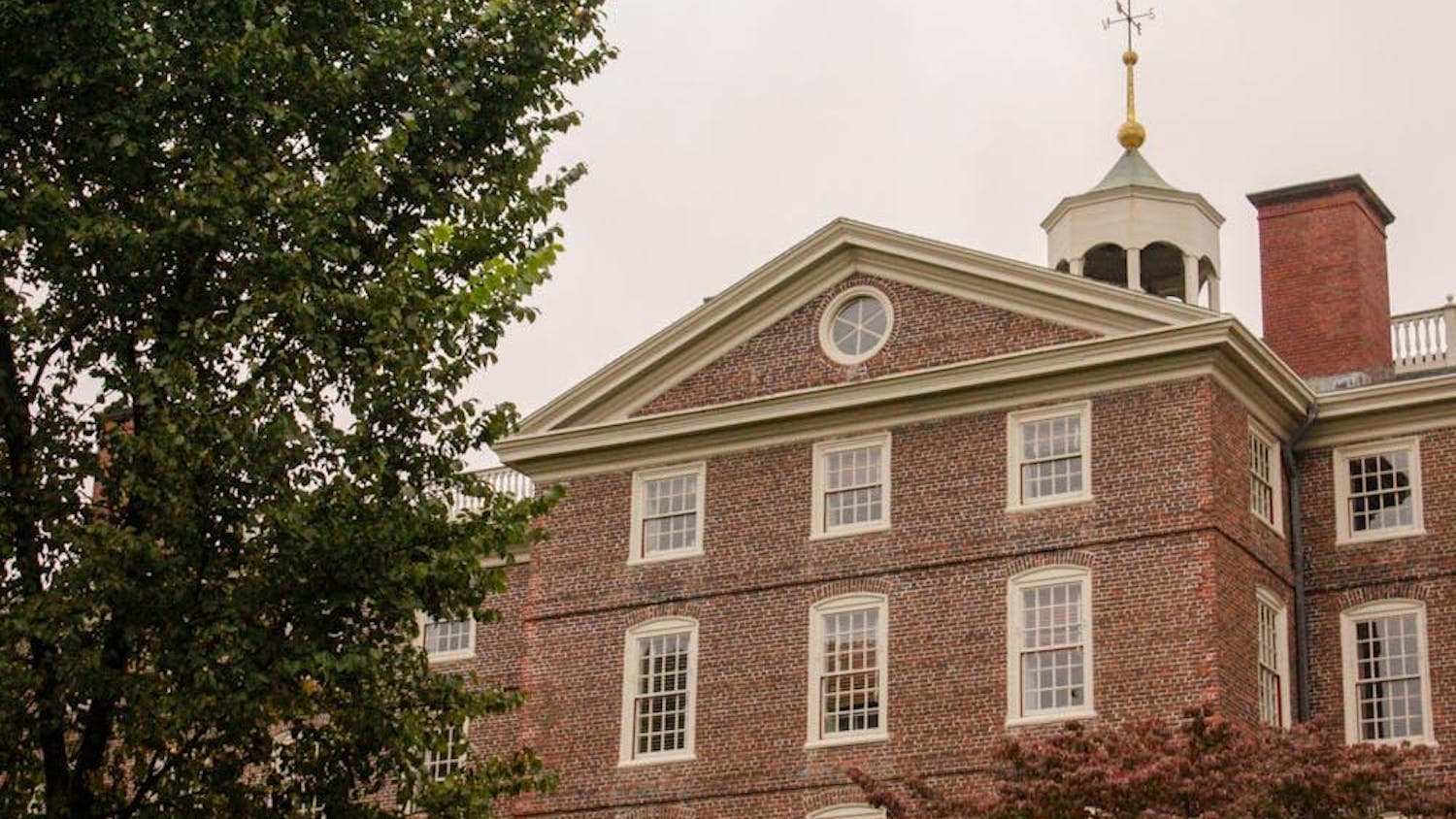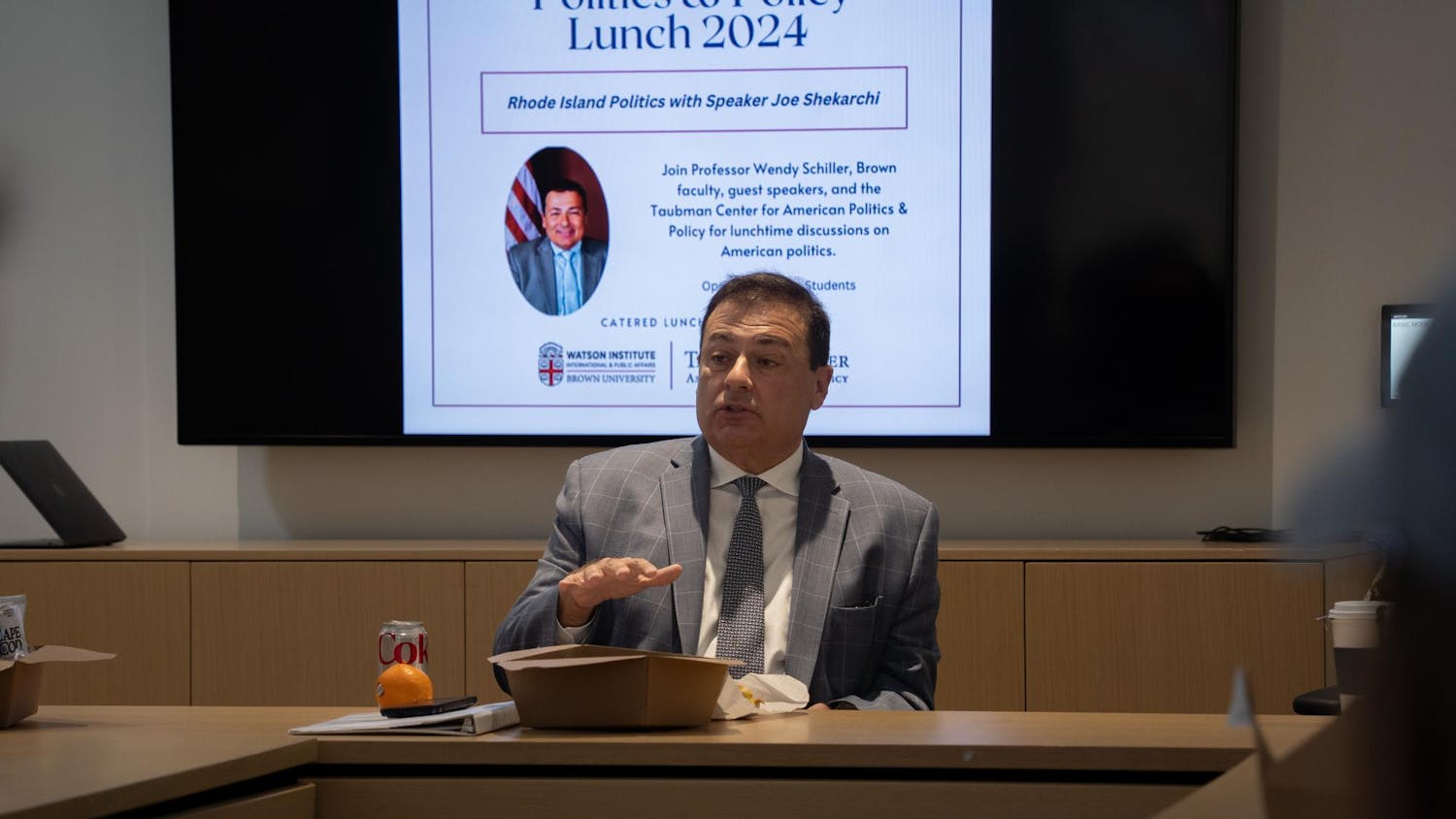A T-Mobile cell phone tower installed on the roof of Barus and Holley has angered some engineering and physics professors concerned about the tower's impact on sensitive research equipment used in the building.
According to Professor of Engineering William Patterson, faculty members are concerned that radiation from the tower, which was installed late last spring and has been in operation for several months, might interfere with powerful but sensitive measurement equipment.
No problems have been reported, Patterson said, but problems may still arise in the future, he added. In the early 1990s, he said, a radio transmitter on top of the Sciences Library wrought havoc on two experiments, leaving the faculty worried about a repeat of the problem.
Tim Wells, director of telecommunications and network technology for Computing and Information Services, said CIS and Facilities Management had not considered the impact on research when they initially approved the cell phone tower.
"We did miss that we were installing it in a research facility," he said.
Sherief Reda, an assistant professor of engineering who works in Barus and Holley, said faculty members were unaware of the project until after construction began, so they were unable to voice concerns about the project until after it had already been approved.
"The first time we were informed was when we found the parking lot closed to accommodate the crane," he said.
In response, Reda — then the vice chair of the Computing Advisory Board, which offers faculty and student perspectives on information technology on campus — called a meeting with the CIS and Facilities.
"We did a very comprehensive overview," he said.
After the meeting, T-Mobile, CIS and Facilities took another look at the possible impact of the tower, Wells said, and concluded that problems were unlikely.
"T-Mobile told us that the radiation in the building from the tower was less than the radiation from a dozen cell phones," Wells said. This reassurance from the company made Facilities and CIS comfortable to move forward, he added.
But Patterson and Reda still have some reservations.
"We just don't know" about possible problems for researchers, Patterson said.
The underlying issue of communication between Facilities, CIS and the faculty has been resolved, Wells and Patterson said.
Wells said he is now in touch with several professors whom he would contact before approving the next project. And open channels of communication between Facilities staff and science professors have diffused much of the remaining tension, Patterson said.
"There's a lot less outrage expressed towards Facilities in committee meetings," Patterson said.
For Patterson and his colleagues at the Department of Engineering, at least some of that outrage stems from problems caused nearly 20 years ago by WBRU radio transmitters placed on the Sciences Library and J. Walter Wilson.
Soon after transmissions began, professors noticed problems with scientific equipment, Patterson said. An anemometer, which measures wind speed, registered storm conditions even when the wind tunnel it was supposed to be monitoring was turned off. A cryocooler, designed to bring experimental materials to within less than a degree of absolute zero, unexpectedly failed to work on occasion. On some days, the equipment functioned flawlessly, but on others, it barely functioned at all.
The mystery was solved late one night by a nocturnal graduate student listening to the radio while trying to fix the anemometer, Patterson said. When WBRU stopped transmitting at 3 a.m., the anemometer suddenly began working. And when WBRU began transmitting again at 7 a.m., the anemometer stopped working. The grad student made the connection: When WBRU was transmitting from the top of the Sciences Library, as opposed to JWW, the radiation emitted by the transmitter caused problems with the equipment.
"That was the real ‘aha' moment," Patterson said.




